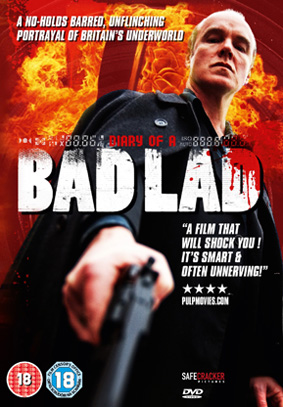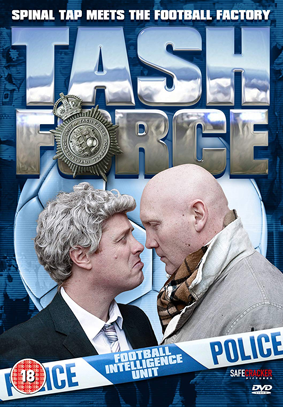- Messages
- 1,509
- Points
- 40
Over the past six months I've filmed quite a lot with the Canon 5D Mark II and as a result, I keep getting enquiries asking advice about DSLR shooting. So I thought I'd write this guide so it may help someone, somewhere decide whether it's the right camera for them. It's by no means scientific or exhaustive and this document is a work in progress.
First of all I'll say that video, out of the box, from the 5DII can look fantastic. I've heard people say that the Sony EX1, and even the Panasonic HVX200 create better looking footage. I also own a Sony EX1 so from experience I can argue that although the EX1 records much more detailed images than the 5DII and is better for color grading, out of the box the 5DII to the layman simply looks better. With a lot of care and attention, the EX1 footage can look better but remember that the price of a 5DII is around £1699 (without lens). The current price of the EX1 with an SxS card is around £5,500. To compare the footage between the two, on a guerrilla run n gun shoot, check out our forthcoming film Tash Force which was shot (and is intercut) with both the 5DII and the EX1 (released Spring 2011).
Just for arguments sake, I used to own a Panasonic HVX200 and while it avoids some of the issues stated below I by far prefer the 5DII. Even if a HVX200 is fully pimped out with a Red Rock M2. That's some statement as the HVX200 has a far better codec and records 4:2:2 which is great for colour grading. However, I would much rather put up with the 5DII's drawback's than the HVX's.
Sensor: The Canon 5DII has a FF35 sensor (Full Frame 35mm). Because it's a still camera, its frame size is larger than even 35mm motion picture cameras. 35mm motion picture film stock has a smaller negative than 35mm photographic (as in stills) film stock so this has carried over to the digital domain. I have to point out that even though it's a FF35 sensor, the video it creates is downsized to 1080p high def video. If it didn't the video would come out at around 5k.
What implications does a FF35 sensor have on filmmakers? Shallow depth of field. For run and gun work like a documentary, shooting with such a large sensor can be a nightmare. This is because if you cannot stop down on the lens (like if you're shooting somewhere dark, or on a dull winters day) it will be difficult to keep your subject in focus. Of course if you have a follow focus, and an experience focus puller this won't be as much of a problem. However we're talking run n gun shooting - one man band camera operation. It's possible to operate yourself but on anything over a 28mm lens, it can be difficult.

To aid you with focusing, and turn the 5D (or other DSLR's) into a more video camera style device I recommend the Zacuto Z-Finder. I don't use my 5D without it ever.
One thing you may want to note with regards to other DSLR's is that if they do not have a full frame sensor, it'll mean the lenses you use with your 5D will be cropped. I always recommend the 5D simply because if you buy a cheap Nikkon lens or suchlike, it'll cover the sensor. Putting a 35mm Nikkon on a 7D will mean a 24mm lens will be more like a 50mm lens due to the cropping that occurs.
Also if you purchase the 7D and buy a lens for the smaller sensor, then you decide to upgrade to a FF sensor camera later on, your 7D lenses will be useless as they are too small to cover the FF sensor and so you will end up with a vignetted image.
Codec: I'll be honest, the codec is terrible. When using the 5D I try to get the best possible image in-camera. Because the codec isn't great it means that the image is pretty much burnt in. While you can colour correct shots to a certain extent you can't push it very much before the picture breaks. Another issue with the codec is that on fast moving shots you will see it struggle to keep up. On gradients you will come across issues with banding and posterizing. If you're like me you will see these issues and won't help but feel disappointed.
The layman won't see most of these issues because they aren't putting it under a microscope and first impressions of the image are that it looks very good. But for anyone involved in post-production they'll cringe at the h.264 codec.
When it comes to editing the footage h.264 is useless so you should convert first. Some editing software's, like Final Cut Studio 3 do this automatically. Or you can download Mpeg Streamclip Pro which is free and brilliant. Then you can just drag and drop your files into the software of your choice for editing.
Other image issues: Besides the codec problems, it's well documented on the internet that there are significant aliasing issues with the 5D and other DSLR cameras. This is because the camera is doing a quick and dirty scale down from a full frame sensor size, to 1080p video. In higher end digital cinema cameras there's a lot of nifty tricksy processing going on to avoid this kind of thing. Because DSLR's are stills first, video later, they don't have the fancy processing power to deal with ironing out those wrinkles.
Another potential problem is that the sensor is CMOS. This means that there's a significant amount of rolling shutter "skew" when panning at speed. This is an issue with DSLR's and conventional video cameras that use CMOS chips for imaging. It's because the image isn't recorded in one go as with a global shutter. So it's that delay on CMOS rolling shutter cameras. If you're careful with what you film you shouldn't have any issues with what you film. Flash bulbs, say if you're filming at a wedding could be an issue however. Whilst filming police corporates, I haven't had one issue with things like police car lights or anything like that though.
If this all sounds like a big dig at DSLR's and the Canon 5D in general it isn't. I just want to point out the negatives so that you can evaluate whether this is the right camera for you.
Now here are the great things about shooting with the Canon 5D Mark II.
Without them (we shot with two 5DII's) we probably wouldn't have made our feature Tash Force as easily as we did. Having a lightweight camera, shooting a very nice FF35 HD image, attached to a shoulder mount (Zacuto Sniper Mount) meant I could cover things well. I could move around fast, which meant it freed me up to think on the spot. It also allowed the actors to be more spontaneous and try things out quickly when things weren't working. We got through an amazing amount of scenes by the day. Set up times were minimal. I used the Z-Finder to help focus and for the most part the set up worked amazingly well. On a few occasions the camera stopped during a take, which I was told was probably due to overheating but strangely the camera didn't feel hot and worked perfectly well only a moment later. As I said above, as it's a mock documentary aliasing in the image here and there can be overlooked but for some that electronic look creeping in may ruin the aesthetic.
As the camera has such a large sensor it means that low light shooting is a dream. You can shoot with available light and get a very nice image. I've done a few experiments with people lit only with in car lights and street lights and the image still looks pretty good.
Would I recommend a Canon 5D Mark II? Absolutely, but be aware of its limitations. I wouldn't suggest using it a main cam on a run and gun documentary where you need to be framed and focused up quickly. I managed it to a certain extent while shooting Tash but we did have an EX1 recording at the same time as a failsafe device so if I didn't manage to get it, the EX1 did. And on occasion we were shooting with 3 cams (1xEX1 and 2x5D) For example, I'm not a wedding video guy, but I imagine in a dimly lit church where you have to open up the lens fully, you would have a sweat on trying to get the ring going on the brides finger framed up and in focus. Unless you know you can get that shot, I'd recommend something like a Sony EX1 for that, and have the 5D recording the wide. Miss that shot and I'm sure the bride and groom wouldn't be very pleased.
On the other hand it's totally reinvigorated my love for filming. Because it's such a small camera, with lots of creative options, once you've got used to a slightly different way of operating the camera it's fantastic. It makes filmmaking fun again after years of using tons of lights, 35mm lens adapters bolted to cameras and heavy tripods.
Recommended accessories: As I stated above the Zacuto Z-Finder is a must own for DSLR filmmaking. It snaps on the back of the DSLR and turns the LCD screen into a much more useful viewfinder. They are quite expensive (around £300) but inside is a professional diopter which really helps with focusing.
You will need some spare batteries. The Canon LP-E6 is what you should be looking out for. You can pick them up for about £25. Another excellent thing about DSLR's, some accessories are far cheaper than for video cameras.
You will need a few Compact Flash Cards. When buying my 5D this was a minefield in itself trying to find the right cards with the correct speed without having to get an overdraft (they are about £60). I can recommend the Kingston Elite Pro 32gb 133x Compact Flash cards. I have read that the smaller sized Kingston's don't work as well but as I've never used anything other than the 32gb version, I can't say any more other than to try before you buy. But the Kingston 32gb cards have worked very well. You can also fit a lot of footage on one 32gb card.

If you can stretch to it, the Zacuto mounts, although pricey are great. I managed to pick up a Sniper mount relatively cheap but I was lucky to find someone who had one surplus to requirements. I must admit these are an expensive luxury and you can also cobble together a cheapy shoulder mount. The sniper mount is about £2,800 but it comes with a (very good) follow focus and Z-Finder. You can get cheaper scaled down Zacuto mounts.

After that you can experiment with other lenses, possibly zooms. Or if you're feeling confident enough, splash out on a new canon lens with image stabilization.
Happy filmmaking!


